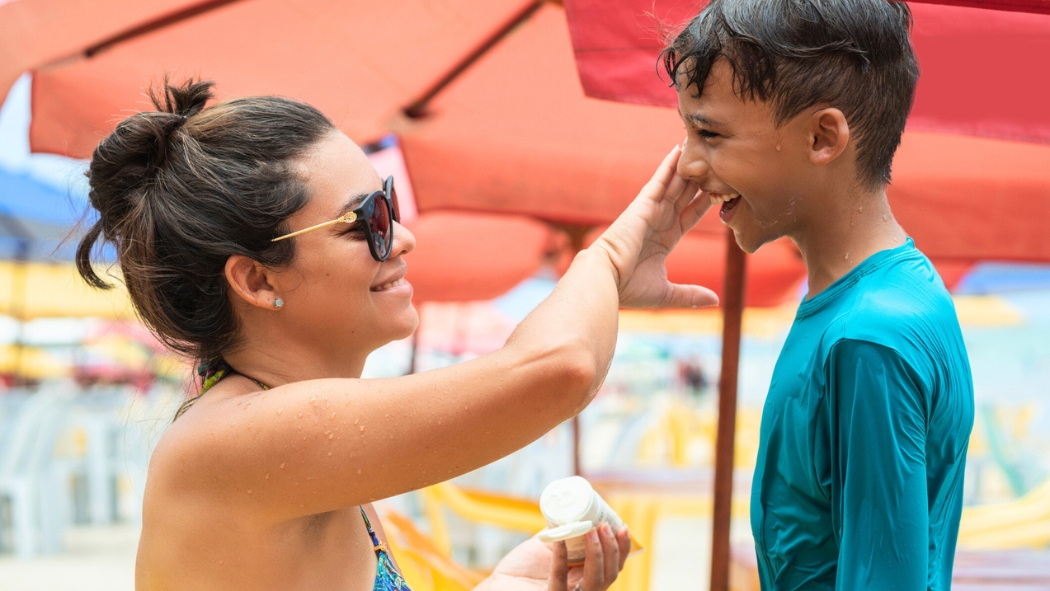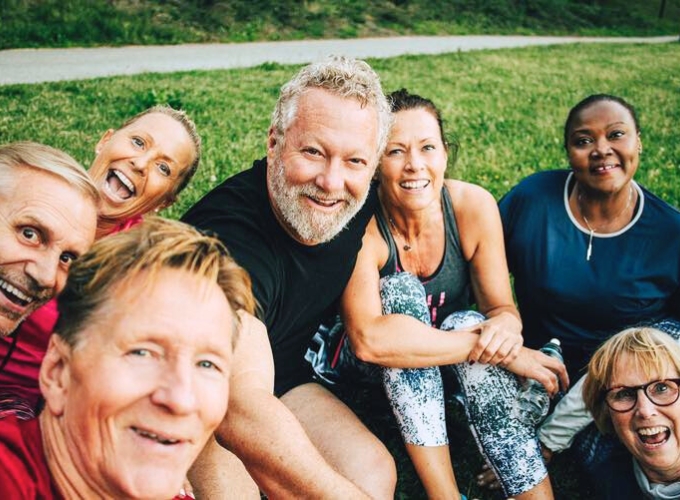Avoiding sunburn and minimizing exposure to dangerous ultraviolet (UV) rays involves more than applying sunscreen before you and your family head to the beach, the pool, or the playground. Take the right precautions by keeping these simple tips in mind.

Quick Take
- Selecting the right sunscreen goes beyond SPF.
- Cover up to protect your skin and eyes.
- A thoughtful sun strategy minimizes risk of skin cancer and helps prevent premature aging.
Avoiding sunburn and minimizing exposure to dangerous ultraviolet (UV) rays involves more than applying sunscreen before you and your family head to the beach, the pool, or the playground. Taking the right precautions isn’t difficult, however — as long as you keep these tips in mind.
Sunscreen by the numbers
Contrary to popular belief, SPF — which stands for sun protection factor — does not indicate how long someone wearing that product can stay outside without burning. It’s more complicated than that, because the amount of safe sun exposure depends on the time of day, your proximity to the equator, the clouds in the sky, your skin tone, and other factors. The higher the SPF, however, the greater the protection. Experts recommend:
- Choosing a sunscreen with an SPF of 15 or higher (the American Academy of Dermatology recommends 30 SPF or higher).
- Using a broad-spectrum sunscreen, which protects against UVB rays, which can cause sunburns, and UVA rays, which can cause wrinkles, age spots, and other permanent skin damage.
- Checking the expiration date or throwing away any sunscreens more than 3 years old. In addition, don’t use sunscreen if the color or consistency have changed.
- Applying an ample amount of sunscreen to every inch of exposed skin, and reapplying at least every 2 hours and whenever your skin gets wet.
- Protecting your lips with lip balm or lipstick with an SPF of 30 or more.
- Checking with your pediatrician before applying sunscreen to a baby younger than 6 months. Instead, keep the baby out of the sun, especially during the middle of the day, and utilize hats and other protective clothing.
When you’re buying sunscreen, reach for something you and your family are most likely to use without complaint. In addition to lotions and creams, you can find gels, powders, serums, and even roll-ons that glide over the skin. You also can choose from two types of sunscreen:
- Chemical sunscreens, which are absorbed into the skin
- Physical sunscreens, which coat the skin with a combination of zinc oxide and titanium dioxide.
Covering up — with clothes, hats, and sunglasses
While protective sunscreen has been around for almost 40 years, clothing labeled with a UPF — ultraviolet protection factor — is a more recent innovation. The higher the number, the better the protection: 30 to 49 UPF is considered very good, while 50 and above is excellent.
Even clothing without a UPF label can help protect from the sun, however. The Skin Cancer Foundation offers these guidelines:
- Dark or bright colors absorb UV rays before they reach skin, providing more protection than light colors or white clothing.
- Clothing made of unbleached cotton, shiny polyesters, and lightweight shiny silks absorb or reflect UV rays, providing some protection.
- On the other end of the protection spectrum, loosely woven fabrics allow UV rays to penetrate easily. So does tight clothing that stretches out when it’s worn.
- Any fabric loses some protection when wet, because it becomes more transparent.
As with clothing, fabric matters when selecting a hat. Straw hats let light — and UV rays — through. The most protective hats are made of tightly woven fabric and have a brim the goes all the way around, shading the neck and face.
When buying sunglasses, look for a UV400 rating or a label specifying 100% UV protection. The larger the frame, the higher the protection, and wraparound-style frames do a great job of keeping UV rays from reaching your eyes.
Staying safe in the sun year round
Utilizing these tips in every season — not just in summer — will help you minimize the risk of skin cancer and help avoid premature aging, such as wrinkles and brown spots. In winter, for example, bright white snow can reflect UV rays from the ground, intensifying your exposure.
If you’re unsure if you need sun protection, you can check the UV index — which measures the risk of sun damage — on your phone or smart device’s weather app or at the National Weather Service’s Climate Prediction Center website.
So slather on the sunscreen, put on protective clothing, hats, and sunglasses — or open an umbrella, if that works for you — and enjoy the outdoors knowing you’re safe from the sun.

Healthier Together
Visit our Facebook group where health coaches share tips to help you live your healthiest life.